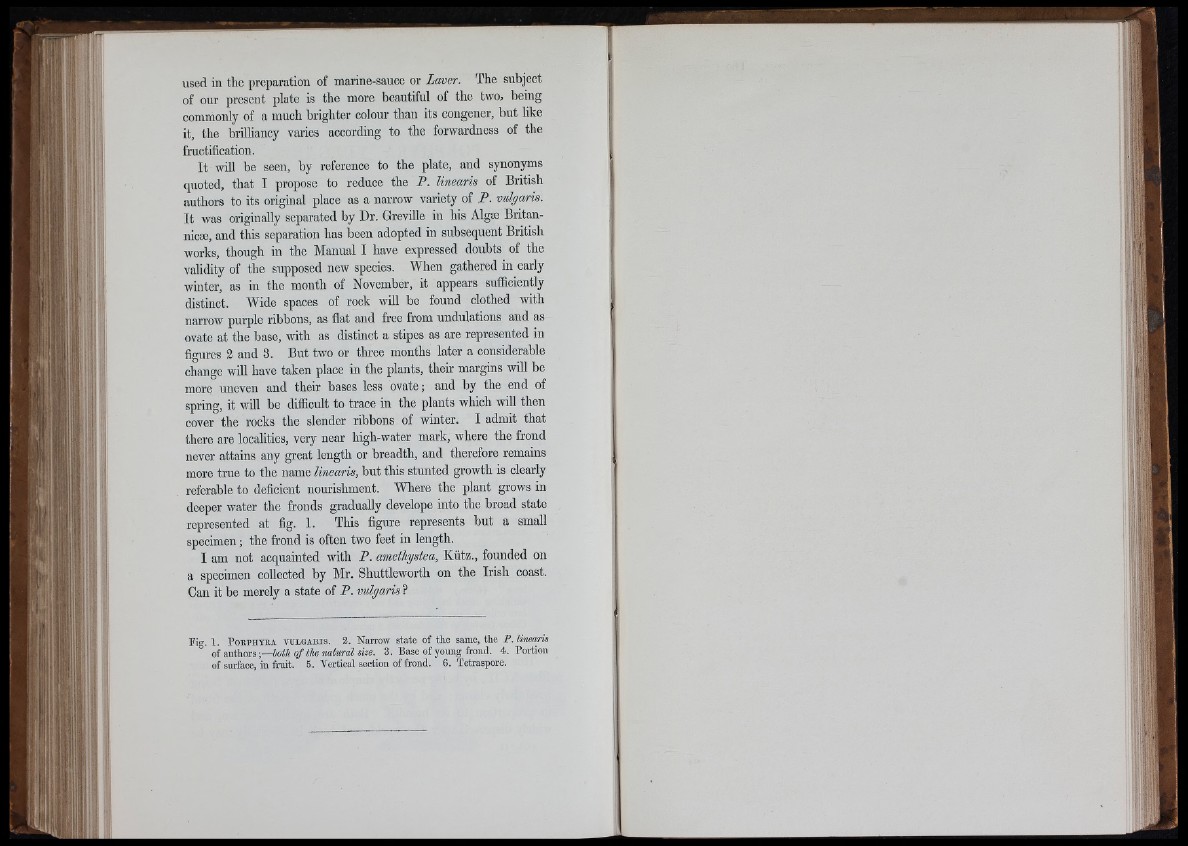
used in the preparation of marine-sauce or Laver. The subject
of our present plate is the more beautiful of the two» being
commonly of a much brighter colour than its congener, hut like
it, the brilliancy varies according to the forwardness of the
fructification.
I t will be seen, by reference to the plate, and synonyms
quoted, that I propose to reduce the P. linearis of British
authors to its original place as a narrow variety of P. vulgaris.
It was originally separated by Dr. Greville in his Algm Britan-
nicai, and this separation has been adopted in subsequent British
works, though in the Manual I have expressed doubts of the
validity of the supposed new species. When gathered in early
winter, as in the month of November, it appears sutficiently
distinct. Wide spaces of rock will be found clothed with
narrow purple ribbons, as flat and free from undulations and as
ovate at the base, with as distinct a stipes as are represented in
figures 2 and 3. But two or three months later a considerable
change will have taken place in the plants, their margins will be
more uneven and their bases less ovate; and hy the end of
spring, it will be difficult to trace in the plants which will then
cover the rocks the slender ribbons of winter. I admit that
there are localities, very near high-water mark, where the frond
never attains any great length or breadth, and therefore remains
more true to the name linearis, but this stunted growth is clearly
referable to deficient nourishment. Where the plant grows in
deeper water the fronds gradually develope into the broad state
represented at fig. 1. This figure represents hut a small
specimen; the frond is often two feet in length.
I am not acquainted with P. ametJiystea, Kiitz., founded on
a specimen collected by Mr. Shuttleworth on the Irish coast.
Can it be merely a state of P. vulyaris ?
Fig. 1. POEMYEA VCLGAEIS. 2. Narrow state of the same, the P. ,
of authors;— hoth of the natural size. 3. Base of young frond. 4. Portion
of snrfacc, in fruit. 5. Vertical section of frond. 6. Tetraspore.